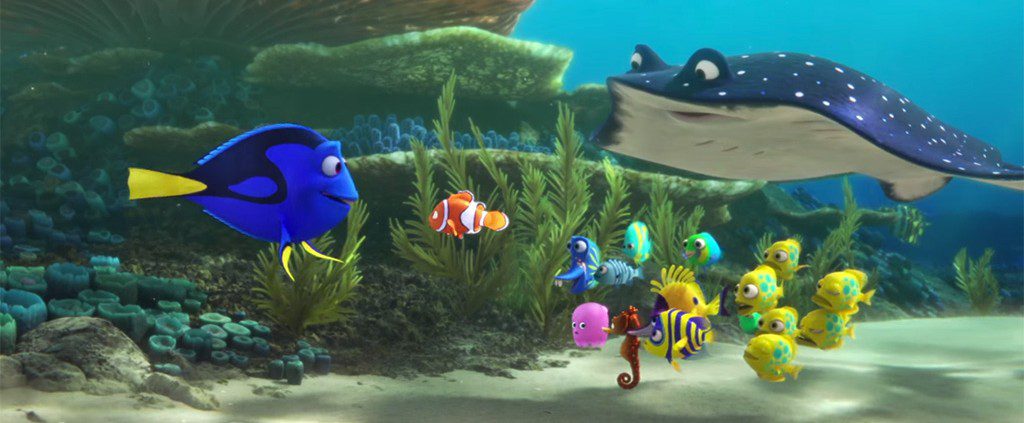Finding Dory: A Fishy Tale of Getting Lost and Found
Rating: 3 out of 5 stars
We’ve not forgotten the endearing regal blue tang, Dory, it seems. Though 13 years have passed since the tad-forgetful and oft-apologetic blue fish first made a splash in Pixar’s animated sea, many still flocked to the theaters for Finding Dory—the sequel to the 2003 Academy Award-winning Disney-Pixar movie Finding Nemo. The result? A whale-sized $136.2 million-opening weekend. This was a new record for the opening of any animated movie in the US; it had previously belonged to Shrek the Third, which grossed $121.6 million in 2007.
That’s a huge catch, considering that there’s nothing fresh about this nautical adventure. After all, we’ve already plumbed the ocean depths in Finding Nemo, laughed and cried with the unlikely trio (that’s Marlin, Nemo and Dory), and learned the importance of family and friendship along the way. So why would a sequel that repeats all the same themes blow the animation record out of the water?
That’s probably because we’re hooked on the amnesiac Dory, one of the greatest Pixar supporting characters of all time. In this adventure—which takes place a year after Nemo is found—the lovable and excitable blue fish is the titular character. After she gets swept up in a massive stingray migration that triggers her memories, she sets off on a quest to find her parents. The trouble is, she can’t quite seem to remember anything about them, save for the fact that they live at “the Jewel of Morro Bay, California”. This sets the backdrop for another heartwarming oceanic adventure with her good pals, Marlin and Nemo.
Along the way, we fall in love with the baby Dory with huge eyes (whom we see during Dory’s intermittent flashbacks) and get acquainted with new characters like Hank, a cranky dexterous “septopus” (since he only has seven tentacles), a kind-hearted myopic whale shark named Destiny, and an insecure Beluga whale named Bailey. These three go to extreme lengths to help the memory-challenged tang find her parents, leaving us in stitches when their efforts lead to a fine kettle of fish.
But like all good Pixar films, Finding Dory is not just about humor and witty dialogue—it’s also about heart. The themes of unconditional love, friendship, and acceptance of disabilities (most notably, Dory’s short-term memory loss) run through the entire 1 hour and 45 minutes, and invariably leave us with warm, fuzzy feelings.
What will probably also strike a chord with Christians is Finding Dory’s simple but important message of finding our way home. As believers, we know full well the pain of separation and sense of helplessness that comes from being lost—as well as the immense joy of being found and reconciled with God. So we can’t help but root for Dory as she embarks on the journey to reunite with her loved ones and celebrate with her when she’s eventually reconciled with her parents. It’s a beautiful depiction of unconditional love—in the ocean and beyond.










Leave a Reply
Want to join the discussion?Feel free to contribute!